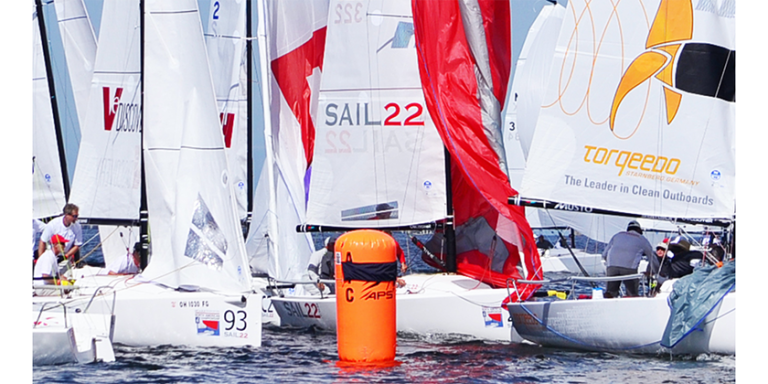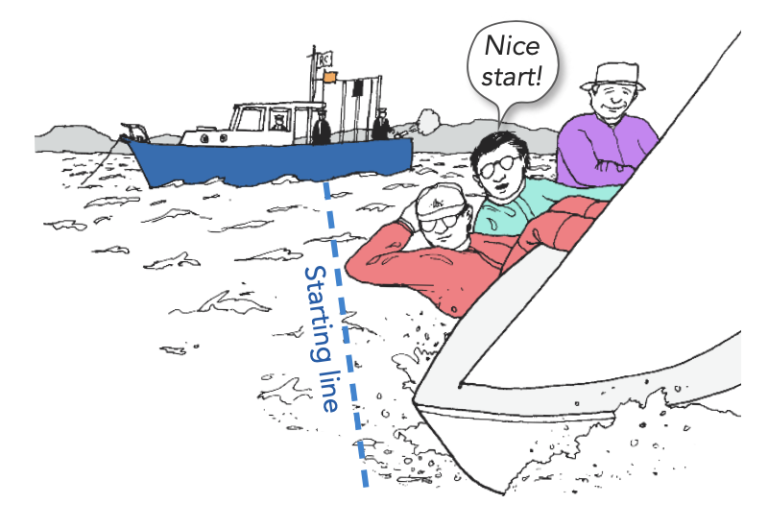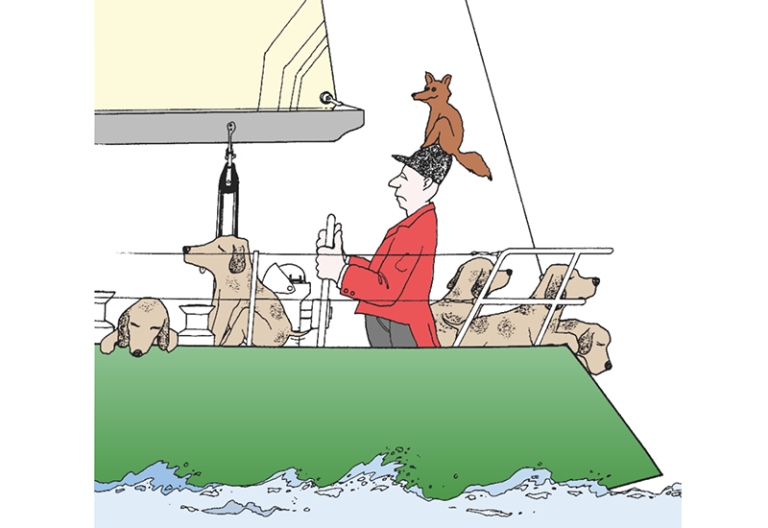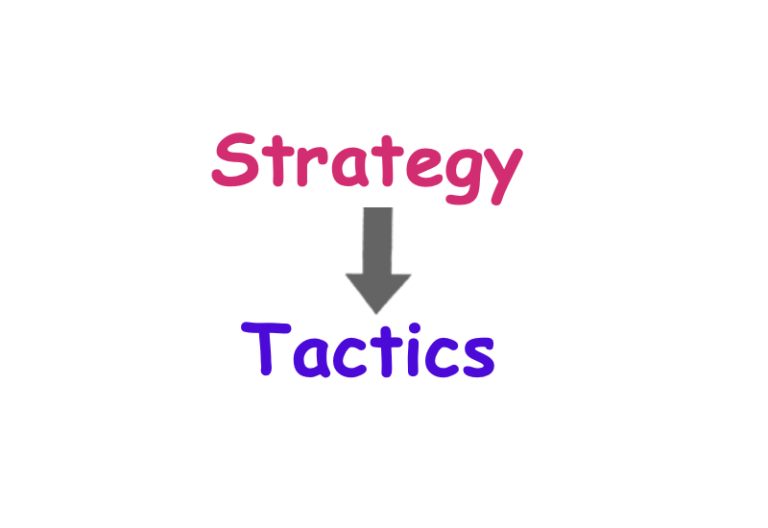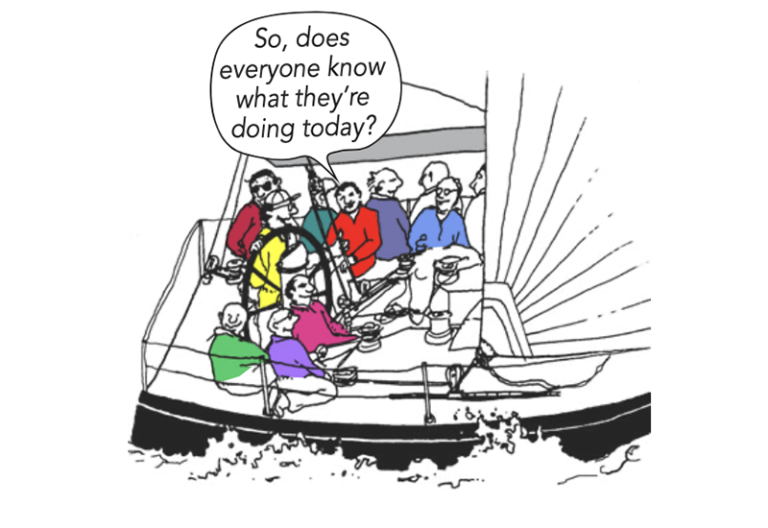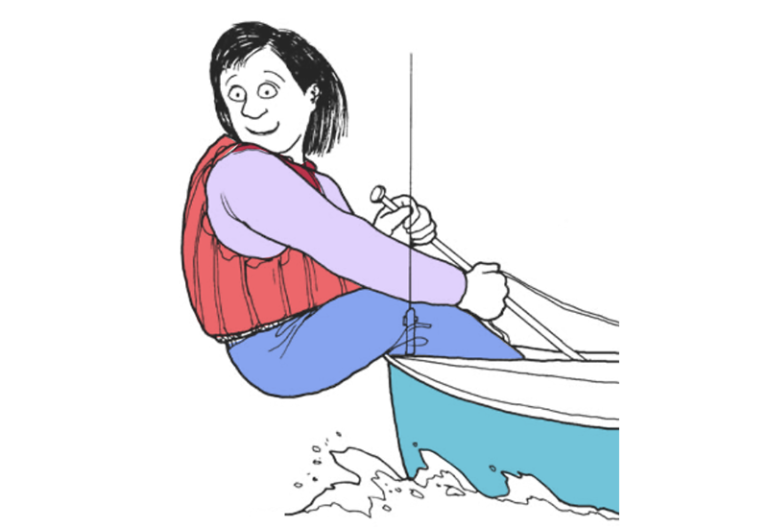Speed & Smarts: Take Control of Your Headsail
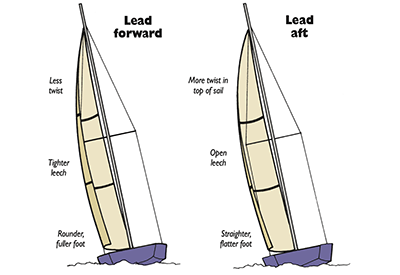
June 14, 2023
Take control of your headsail
The mainsail may be the biggest sail on most boats, but the jib provides a relatively large share of the boat’s driving force, for two reasons. First, the jib is not sitting behind a mast, so it sails in clear air with minimal turbulence. Second, the jib operates in a continuous lift that is created when the wind bends to pass on the leeward side of the main. Because of this, the jib is fuller and more powerful, and trimmed farther off centerline, than the mainsail. While the mainsail is critical for the balance of the boat, the jib provides pure horsepower and drive. That’s why it is important to find the optimal jib shape for any combination of wind and waves, and to ‘shift gears’ by adjusting that shape whenever conditions change.
Unlike the mainsail, however, the jib is not attached to a rigid spar, so you can’t fine-tune its shape as much. For this reason, you must give the headsail priority when adjusting the backstay (which affects the shape of both sails), and you must fully utilize the few sail controls that do exist for the jib. A sail control is a device that helps us change the sail’s shape while racing. The primary controls affecting the jib and genoa are the jib sheet, jib lead position, jib halyard (which controls luff tension) and the backstay or mainsheet (primary ways to control headstay sag). These systems allow us to adjust the depth of the sail, the position of that depth, the sail’s twist and the shape of its leading edge.
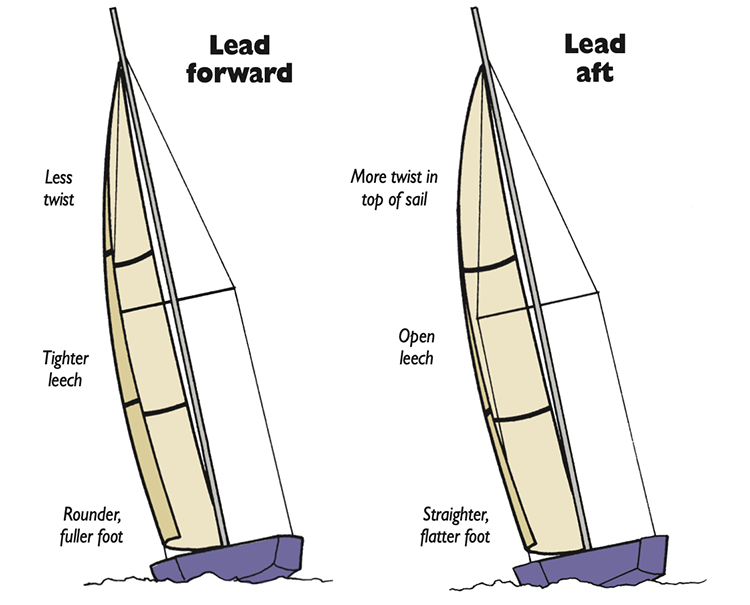
In order to get fast upwind shapes, we have to know how each sail control works. When you pull harder on the jib halyard and add tension along the luff, for example, what happens? And how does each control interact with the others to affect the shape of your jib or genoa?
Jib lead position works like the main outhaul
Moving the jib/genoa lead fore and aft affects foot depth, much like the outhaul controls foot depth on a mainsail. To add depth, move the lead forward. This shortens the distance between the clew and tack, which moves the foot of the sail farther away from its chord line. It also reduces twist and makes the leech tighter. This adds power to the sail, but too round a shape down low will give the sail a tight, hooked leech which can narrow the slot, stall wind flow and create backwind.
If you move the jib/genoa lead aft it reduces depth in the foot. It makes the bottom half of the sail flatter and opens up the leech, creating more twist in the sail. This depowers the sail, but allows you to sheet the sail harder (because you can do this without making the leech too tight).
The fore-and-aft position of your jib car is critical for getting the right headsail shape. Moving the lead aft makes your headsail flatter and more twisted, which is good when you have a lot of wind. Moving the lead forward gives you a tighter leech and a deeper sail. This is generally good in lighter air when you need a lot of power. However, you have to be careful about getting the leech too tight in light air, especially if there are any waves. In those conditions, the trimmer typically eases the sheet quite a bit – that’s why he or she also has to move the lead forward, or the sail will twist too much.
Two ways to set fore-and-aft lead position
Finding the right hole or position for your jib lead can be tricky because it is a function of the particular jib you are using and, of course, the specific wind and wave conditions in which you are racing. Here are two ways you can approach this:
1. Set the jib lead position so the telltales along the luff break evenly from top to bottom. In other words, as the boat heads up into the wind, the telltales on the windward side should all start lifting up at the same time. If the top telltale breaks first, move the lead forward; if the bottom one breaks first, move the lead aft.
This idea is great in theory, but in practice the top telltale usually breaks first. If you move the lead far enough forward so all the telltales break evenly, it may limit your ability to sheet the sail and cause too much backwind in the main. In conditions where you need a good bit of twist in the sail, such as in light or heavy wind or waves, it’s OK to let the top telltale break a little early.
2. Set the jib lead position so that when you pull in the sheet the foot and leech of the sail trim in concert and reach their perfect trim at the same time. If the foot gets too tight before the leech is tight enough, move the lead forward. If the leech gets tight and there is still too much curvature in the foot, move the lead aft. This is my preferred method.
Four elements of headsail shape
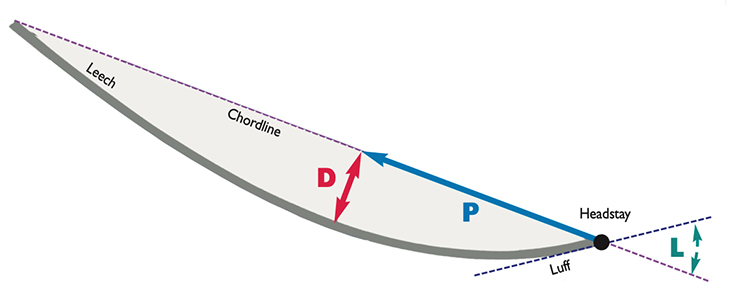
This cross-sectional view of a headsail shows four basic sail shape factors. The Depth (D) of this sail is a measure of how round it is (i.e. how far the sail is from a chordline drawn between luff and leech). The Position of maximum draft (P) is determined by how far aft the deepest part of the sail is from the luff. The Leading edge angle (L) is the angle between the sail’s chordline and a tangent drawn to the forward part of the luff. The sail’s Twist (T not shown but look for it) is the change in the angle of the sail’s chordline while moving up the leech from the clew toward the head.
The purpose of having sail controls is so you can optimize the shape of the headsail for the existing wind and wave conditions. On most boats, one all-purpose jib has to morph from a deep light-air shape to a flatter shape for heavier wind. The addition of draft stripes on this sail makes it much easier for sailors to see the overall depth, the position of maximum draft, the leading edge angle and how much twist there is.
More on headsail trim next time.
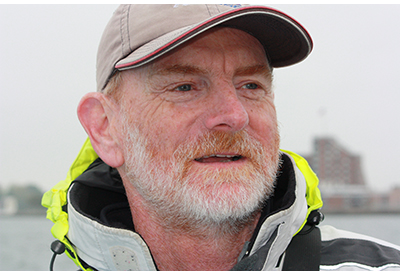 Dave Dellenbaugh is the publisher, editor and author of Speed & Smarts, the racing newsletter. He was the tactician and starting helmsman on America3 during her successful defense of the America’s Cup in 1992 and sailed in three other America’s Cup campaigns from 1986 to 2007. David is also two-time winner of the Canada’s Cup, a Lightning world champion, two-time Congressional Cup winner, seven-time Thistle national champion, three-time Prince of Wales U.S. match racing champion and past winner of the U.S. Team Racing Championship for the Hinman Trophy. He is currently a member of the US Sailing Racing Rules Committee (and was its chairman from 2005-2008).
Dave Dellenbaugh is the publisher, editor and author of Speed & Smarts, the racing newsletter. He was the tactician and starting helmsman on America3 during her successful defense of the America’s Cup in 1992 and sailed in three other America’s Cup campaigns from 1986 to 2007. David is also two-time winner of the Canada’s Cup, a Lightning world champion, two-time Congressional Cup winner, seven-time Thistle national champion, three-time Prince of Wales U.S. match racing champion and past winner of the U.S. Team Racing Championship for the Hinman Trophy. He is currently a member of the US Sailing Racing Rules Committee (and was its chairman from 2005-2008).
You can subscribe to the Speed & Smarts newsletter HERE.

